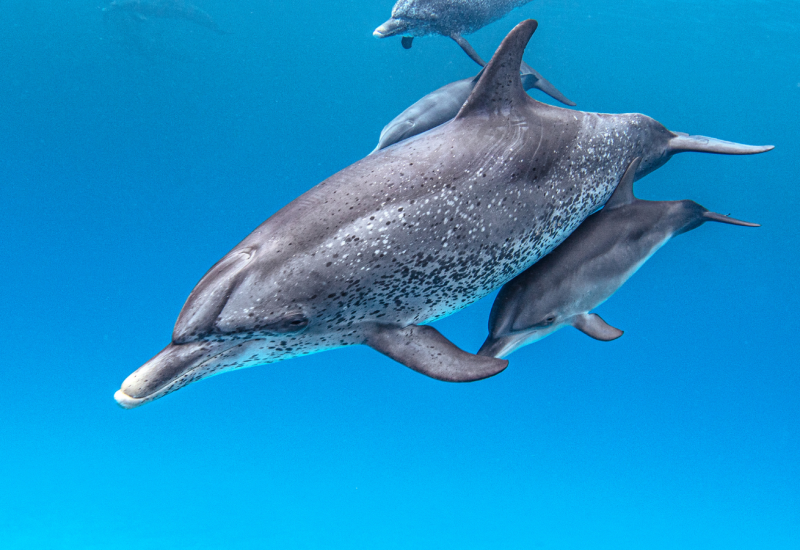Picture Perfect: Photographing Oceanic White-tip Sharks

The first question I usually get asked after someone finds out that I am a diver is “Do you ever see any sharks?” Both the diving and nondiving public is fascinated by them. There are so many different sharks, but one of my favorite species to photograph is the oceanic white-tip, a large pelagic shark with a stocky body and big rounded pectoral fins. They remind me of a bent-wing F4U Corsair fighter plane from WWII.
Location
This image was taken in open ocean off the Bahamas. Oceanic white-tips can be found in many tropical and warm temperate locations around the world. They spend most of their time cruising the upper water column looking for feeding opportunities. Their numbers are threatened and even critically endangered in some areas of the world due to overfishing and finning. Seeing one in the wild is a truly amazing experience.
Photographing Sharks
There are a few things to keep in mind when photographing any free-swimming shark. The focus point needs to be on the face or eye, but don't get so caught up in this that you cut off the animals tail fin. For full-body shots, remember to recompose the image to include the entire shark. You want to shoot the tail fin when it is positioned toward the camera. If you catch it when the tail is swung away from the camera it can look like half a shark or it's missing its tail. Most sharks have very white bellies. Care must be taken when using fill flash so you don't overexpose their light-colored underside. When shooting pelagic animals, it can be challenging to find other points of interest to compose your image with since there is no colorful reef to add to the foreground. Luckily, oceanic white-tips often swim near the surface, which can create a nice background texture or add some reflections. Also, they often travel with their own entourage of pilot fish and remoras. For this image, I set a manual exposure setting, after metering for the blue water in the background, and filled in the shadows using manual strobe power settings. TTL would have probably worked equally well. Nikon D2X with a Tokina 10-17mm Fisheye lens zoomed to 17mm. ISO was set to 100, 1/320 sec at f/7.1 and 2 Ikelite 200 strobes.
Post Processing
Post on this image was pretty straightforward. In Lightroom, I balanced out the exposure and white balance. Gave it a preset medium contrast tone curve. Added a little clarity, which adds some overall sharpening to the mid tones and added a bit of vibrance to make the colors a bit more punchy.
The next time you have a shark encounter, I hope you can use some of these tips to create your own Picture Perfect shark image.
Todd Winner is a professional underwater photographer and cinematographer, PADI scuba instructor and owner of Winner Productions, a boutique post production facility catering to Hollywood's most elite cinematographers. Since taking up underwater photography in 1990, Todd Winner has won over 60 international underwater photo competitions. His images have been published in numerous magazines and online publications. His work has been featured in commercial advertising, museums and private galleries. To see more of Todd's work or join one of his underwater workshops, please visit www.toddwinner.com.










